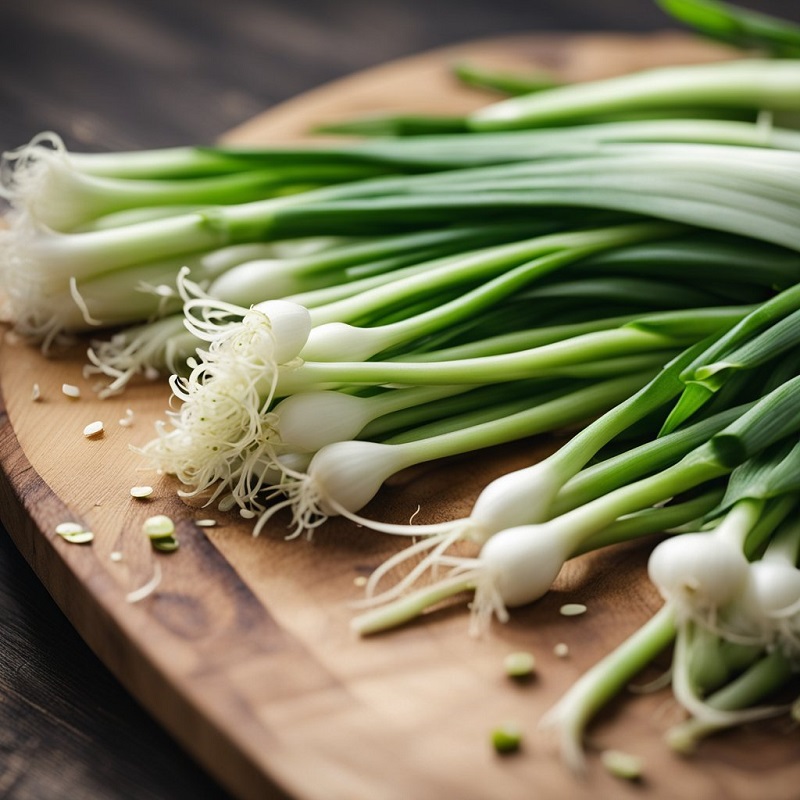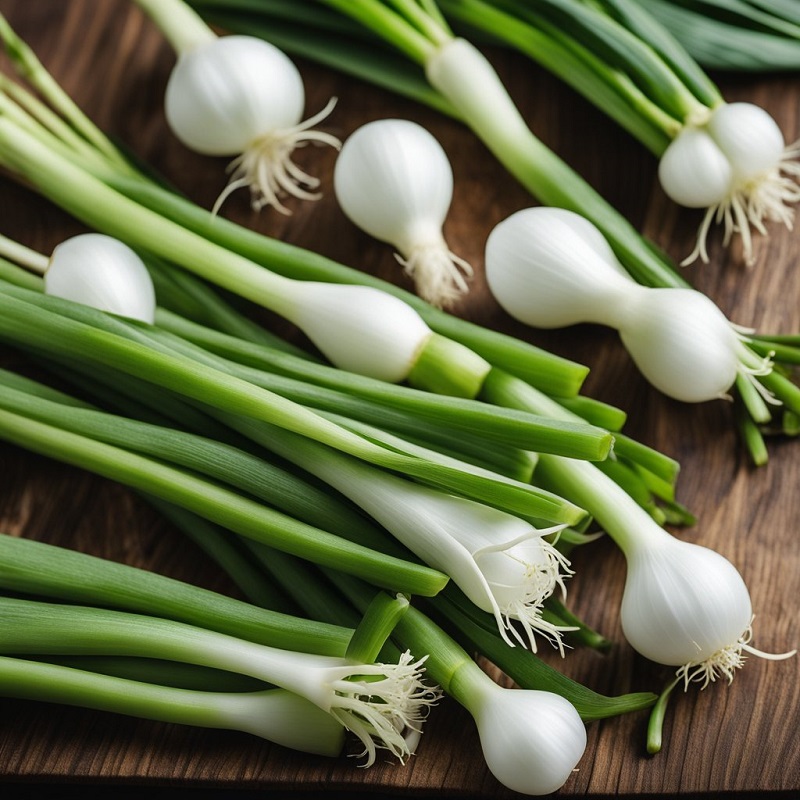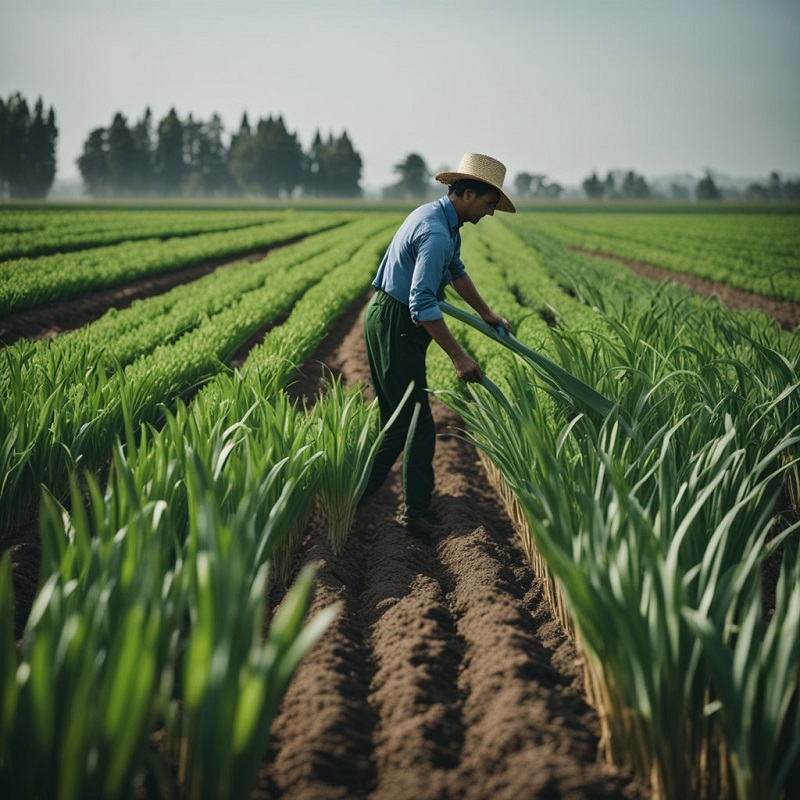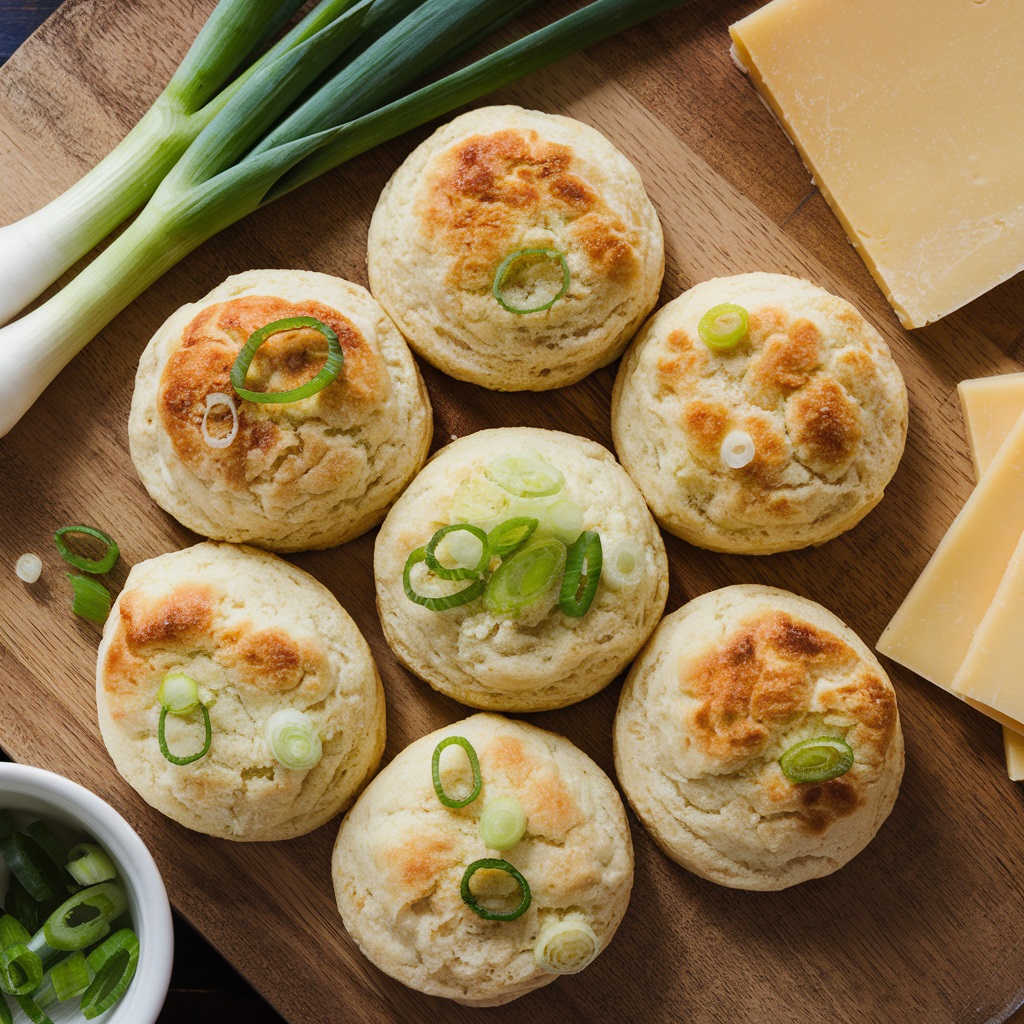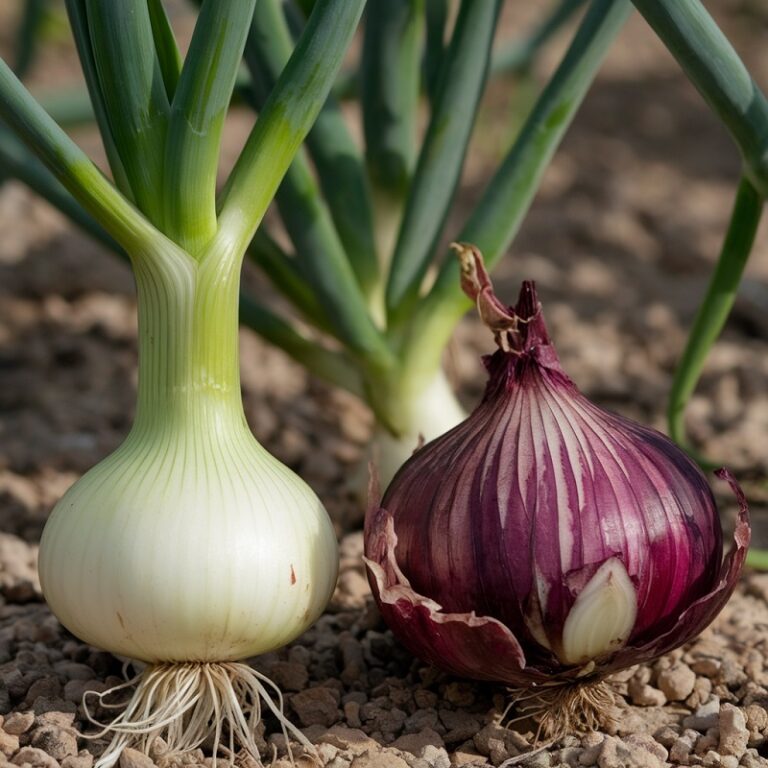Green onion, often called scallions or spring onions, are more than just a garnish. They are flexible ingredients that add flavor and nutrition to many dishes, making them a staple in kitchens worldwide. This article will explore their classification, cultivation methods, nutritional benefits, and culinary uses, offering insights into why they are so valuable in cooking and gardening.
In addition to their culinary applications, green onions have economic significance for farmers and communities. They are easy to grow and can yield a good profit for small-scale farmers. Understanding their importance can inspire greater appreciation for this simple yet versatile vegetable.
Key Takeaways
- Green onions are a valuable ingredient in various cuisines.
- They are easy to cultivate and have significant economic benefits.
- Green onions offer important nutritional benefits to those who consume them.
What Are Green Onions?
First things first: what exactly are green onions? Often referred to as scallions, green onions are a type of Allium, a genus that includes garlic, onions, leeks, and chives. They are harvested before the bulb fully develops, leaving you with long, green stalks and a small, white base. Unlike regular onions, both the stalk and the bulb of green onions are edible.
Green onions are known for their mild, slightly sweet flavor, making them a favorite for garnishing and adding to a wide variety of dishes.
Green Onion Classification
Green onions, also known as scallions or spring onions, belong to the Allium genus. Their classification highlights their distinct botanical characteristics and the various types cultivated around the world.
Botanical Profile
Green onions are classified scientifically as Allium fistulosum. This species is a member of the Amaryllidaceae family.
They are characterized by their long, green stalks and white bulbs. Unlike traditional onions, green onions do not form a large bulb and instead grow as elongated stems.
This plant thrives in well-drained soil and prefers cooler temperatures. Green onions are biennial, meaning they complete their lifecycle in two years.
They produce small white flowers that are attractive to pollinators. This species is popular for its mild flavor, which is less pungent than that of regular onions.
Varieties and Typology
Green onions come in several varieties based on appearance and flavor. Some common types include:
- Scallions: These have a milder taste and are often used in salads and garnishes.
- Spring Onions: These are similar but have a larger bulb and stronger flavor.
- Welsh Onions: Also known as Allium fistulosum, they are more robust and can survive colder climates.
Each variety can be used in different culinary applications, from raw dishes to cooked meals. They are not only valued for their taste but also for their nutritional benefits. Green onions are low in calories and provide vitamins A and C, along with antioxidants.
Green Onion vs. Scallion vs. Spring Onion
One of the biggest questions about green onions is: how do they differ from scallions and spring onions? You’ve probably seen all three at the grocery store and wondered if they’re interchangeable.
Here’s a breakdown:
| Type | Description |
| Green Onions | The entire plant is edible, with a mild flavor. They have a small, white bulb and long green stalks. |
| Scallions | Essentially the same as green onions, the terms are often used interchangeably. |
| Spring Onions | These have a larger, more defined bulb than green onions or scallions, with a stronger flavor. They’re harvested later and resemble young onions. |
| Leeks | Much larger than green onions, with a milder taste. Usually used in soups and stews. |
| Ramps | Wild cousins of green onions, ramps are seasonal and have a garlicky flavor. Often foraged in the wild. |
Real-time farming data shows that spring onions are becoming increasingly popular in certain regions of North America due to their more pronounced flavor.
Cultivation Practices
Cultivating green onions requires attention to various important details. Key areas to consider include planting techniques, soil and climate requirements, irrigation and fertilization, and effective pest and disease management.
Planting Techniques
When planting green onions, starting from seeds or transplants is common. If using seeds, they should be sown in rows 1 inch apart and ¼ inch deep. For transplants, a spacing of 2-4 inches between each plant is ideal.
Farmers can also practice direct sowing in the garden or use raised beds. This method assists with drainage and improves soil warming.
To promote growth, plant in early spring or fall, when temperatures range between 60°F to 75°F. Continuous sowing every few weeks can ensure a steady supply through the growing season.
Soil and Climate Requirements
Green onions thrive in well-draining soil that holds moisture but avoids waterlogging. A loamy or sandy loam soil with a pH between 6.0 and 7.0 is optimal. Adding organic matter such as compost improves soil fertility and structure.
For climate, they prefer cool conditions. The ideal growing temperature is between 60°F to 75°F. Regions with hot summers may require partial shade to prevent bolting, which occurs when the plant prematurely flowers and produces seeds.
Consistent moisture is essential for maintaining healthy onion growth, especially during the formative stages.
Irrigation and Fertilization of Green Onions
Green onions need consistent watering, especially during dry spells. An inch of water per week, either from rain or irrigation, is typically adequate. Drip irrigation systems work well as they deliver water directly to the roots, minimizing evaporation.
Fertilization should occur at planting and then every 4-6 weeks. A balanced fertilizer with equal parts nitrogen, phosphorus, and potassium, such as a 10-10-10 formulation, supports healthy growth. Organic options like fish emulsion or seaweed extract are beneficial and environmentally friendly.
Monitoring soil moisture helps to ensure the right balance between wet and dry conditions.
Pest and Disease Management
Green onions are susceptible to various pests, including aphids and onion flies. Regular monitoring is vital to catch infestations early. Using row covers can provide a barrier against pests during the early stages.
Fungal diseases, such as downy mildew, can be problematic. Proper spacing improves air circulation and reduces humidity around plants. Additionally, rotating crops each season helps prevent soil-borne diseases.
Utilizing organic pesticides, if necessary, can protect crops without harming beneficial insects. Regular upkeep and attention to plant health are key steps in effective pest and disease management.
Where are they grown?
- In the U.S., California and New Mexico are top producers of green onions, thanks to their warm climates and well-drained soils.
- Home gardeners can easily grow green onions indoors in small containers like the Garden Tub, making it a convenient choice for urban gardening enthusiasts.
| Country | Percentage of Global Production |
| China | 52% |
| United States | 10% |
| Mexico | 8% |
| Others | 30% |
The Life Cycle of a Green Onion
Green onions have a relatively quick growth cycle, making them a great option for those who want a fast-growing crop.
- Germination: Seeds germinate within 7-14 days, depending on soil temperature.
- Growth: After germination, the plants grow rapidly, and within 6-8 weeks, they’re ready to be harvested.
- Harvesting: When the green stalks reach about 12 inches in height, and the white base is about the size of a pencil, they can be harvested.
Many gardeners use a Garden Tub for indoor green onion cultivation, which allows for year-round growth, even in colder climates.
Nutritional Benefits of Green Onion
Green onions may be small, but they’re packed with nutrition. They are low in calories but high in beneficial vitamins and minerals.
- Vitamin C: Boosts immune health and helps in the absorption of iron.
- Vitamin K: Essential for blood clotting and bone health.
- Folate: Important for cell growth and function, especially during pregnancy.
- Fiber: Aids digestion and supports a healthy gut.
| Nutrient | Amount per 100g |
| Calories | 32 kcal |
| Vitamin C | 18 mg |
| Vitamin K | 207 µg |
| Fiber | 2.6 g |
Green Onions in the Kitchen: How to Use Them
Green onions are incredibly versatile in the kitchen. Both the white and green parts are edible, and they can be used in a wide range of dishes.
Popular Uses:
- Salads: Add fresh green onions to your salads for a mild onion flavor.
- Soups: Sprinkle chopped green onions over soups for an extra layer of flavor.
- Stir-fries: Stir-fry green onions with your favorite veggies and protein.
- Dips: Mix green onions into sour cream or yogurt-based dips for a fresh twist.
Here’s a quick recipe to try:
Green Onion and Cheese Biscuits
Ingredients:
- 2 cups all-purpose flour
- 1 tsp baking powder
- 1/2 tsp salt
- 1/4 cup cold butter, cubed
- 1/2 cup chopped green onions
- 1/2 cup shredded cheddar cheese
- 3/4 cup milk
Instructions:
- Preheat your oven to 400°F (200°C).
- Mix flour, baking powder, and salt in a large bowl.
- Cut in the butter until the mixture resembles coarse crumbs.
- Stir in the green onions and cheese.
- Gradually add milk, mixing until a soft dough forms.
- Drop spoonfuls of dough onto a baking sheet and bake for 12-15 minutes until golden brown.
Green Onion Fun Facts and History
Did you know that green onions have been used in cooking for over 5,000 years? They originated in Central Asia and spread across the world, becoming a staple in many cuisines. In Ancient Egypt, they were even considered a symbol of eternity!
Here are a few fun facts:
- Green onions are sometimes called “bunching onions” because they grow in clusters.
- In Korea, green onions are a key ingredient in kimchi, a traditional fermented dish.
- Green onions can regrow from their roots—making them a cost-effective and sustainable choice for home gardens.
Green onions are a versatile, nutritious, and easy-to-grow crop that can elevate almost any dish. Whether you’re growing them in a Garden Tub or picking them up at the store, they’re a great addition to your kitchen. With a little care and attention, you can enjoy fresh green onions all year round, right from your windowsill.


